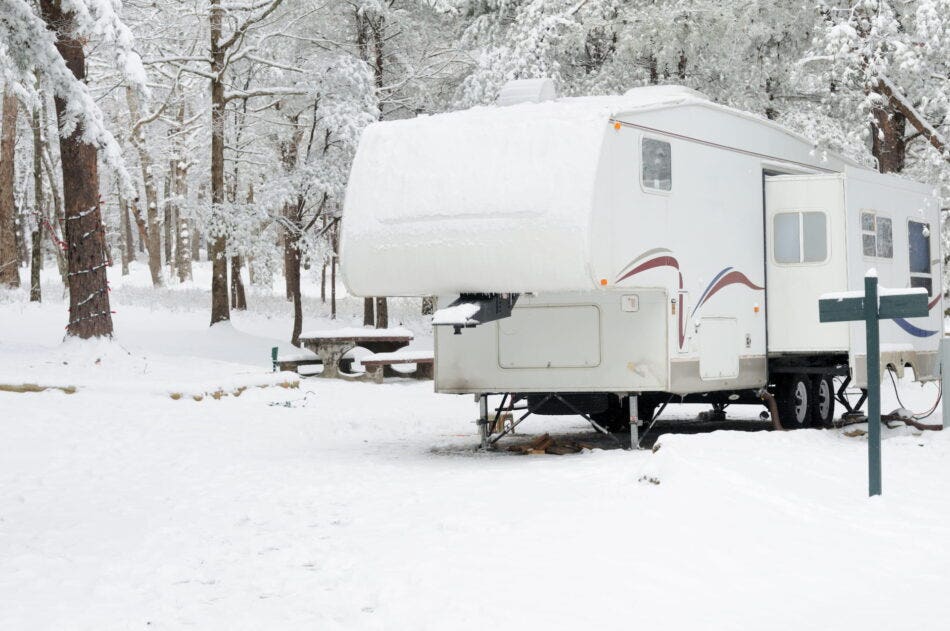Ice damming is when there is a buildup of ice, snow and water on the roof of your RV. It’s generally caused by a repeated thaw-freeze cycle. The ice dam can cause damage to the roof and allow water to enter your RV, resulting in even more destruction. Unfortunately, RV insurance won’t cover damage caused by these ice dams. This makes it important to know how to prevent, recognize, and remove ice dams from your RV before they cause serious problems.
How to Prevent Ice Dams from Forming on Your RV
To prevent ice dams from forming on your RV, you can do the following:
- Consider storing your RV indoors or building a shelter over it to protect the roof from the elements
- Regularly inspect your roof for cracks, holes, and snow/ice accumulation
- Fix any roof issues right away
- Pull in your slides before and during snowfall
- Remove snow from your RV’s roof
Significant snowfall (over 30 centimetres) carries the highest risk for ice dam development. You may need to remove snow from your RV’s roof in this case. We recommend standing on a ladder next to the RV and using a rubber roof rake to remove snow. Avoid going onto the RV’s roof and shovelling, as this can risk your personal safety and potentially damage the roof.
How to Recognize Ice Dams on Your RV
You can’t always prevent an ice dam from forming. You can recognize ice damming through the buildup of ice on top of your RV. There are usually icicles. You may even have water pooling on the top of your RV or inside the RV itself.
How to Remove Ice Dams from Your RV
There are a few ways to remove ice dams from your RV:
- Use heat tape to create a channel for water to drain.
- Use a blunt tool like a mallet to create a channel in the ice to allow the water to drain.
- Use calcium chloride snow melt products (put some in a stocking and place it over the ice) – just make sure this is safe to use on your RV as it can cause corrosion with certain roofs! It’s also best to use this when you’re at home and not out in nature as it can damage nearby plants.
- Call a specialist!
With an RV, it’s important to consider where you are. Obviously, it’s going to be difficult to get a specialist out if you’re somewhere remote. You also need to check if you’re allowed to use calcium chloride as it can harm the environment.
Ice Dams & RV Insurance
If an ice dam develops, damages your roof, and causes water to seep into your RV, you won’t be covered by RV insurance. Unfortunately, ice damming isn’t covered by this protection as damage caused by ice damming is considered preventable with proper care and maintenance.
Contact your RV insurance broker if you have any questions or concerns.

